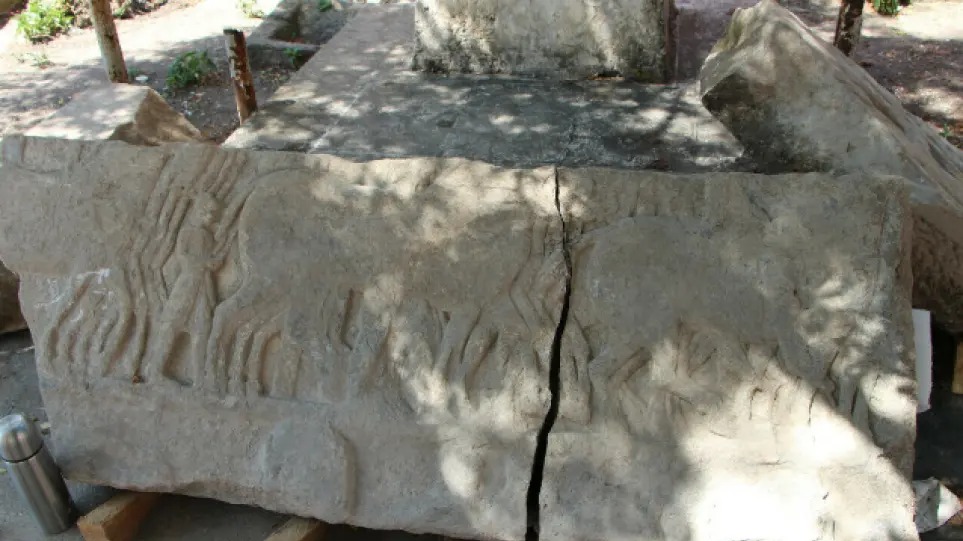TURKEY: Discovery of Ancient Relief depicting Greco-Persian wars
Archaeologists in northwestern Turkey discovered a relief on Aug. 16 depicting a war between the Greeks and Persians in the fifth century B.C.

The figures on the relief show fighting Greek soldiers beneath the hoofs of Persian warhorses said archaeologist Kaan Iren, who leads the dig site of the ancient city of Dascylium found in the modern-day Bandırma district of Balıkesir province.
“Here is a scene of propaganda under the pretext of war. We can say these reliefs are a scene from the Persian-Greek wars,” İren told the state-run Anadolu Agency.

“We think these reliefs were probably made for propaganda purposes during the wars,” he added.
Iren, who has been working at the excavation site in Dascylium with a team of 30 people since June 22, said they had unearthed parts of a stone and mudbrick wall dating back to the eighth century B.C. this year.
“Of the eighth-century-B.C. wall left from the Phrygian age, this year we unearthed an area of 4 meters high and 40 meters long. We think that this wall had a height of 7 to 8 meters.
We prepared a protection roof project for this place. We will present it to the Balıkesir Cultural Heritage Preservation Regional Board. If approved, we will take this place until protection,” said Iren, who is also a faculty member of the Muğla Sıtkı Koçman University.
The 5-meter-wide wall is believed to have been built by the ancient Phrygian civilization to protect its territory, Iren said.
Stating that the first settlers of the ancient city were the Phrygians, İren mentioned that the last place where this civilization was seen in the north and west of Anatolia was Dascylium.
“The wall is a 5-meter-wide fortification wall that these people built to protect their own space. Our work continues here.
There is a tower just ahead. We will continue to work until this tower. If the sponsors continue in the coming seasons, we will open this area completely and bring it to tourism,” he said.
İren said that the discovery of reliefs during the wall excavation this year was a surprise. Stating that the reliefs carved into the stone were cleaned by the restorers in the excavation house, İren said: “The relief, dating from the Persian era in the fifth century B.C., depicts the war between the Persians and the Greeks.

This was one of the most important findings of the season for us. In the figures on it, there are Greek soldiers fighting and Persians on horseback fighting them. Greek soldiers are depicted under the hoofs of Persian horses.
There is a propaganda scene here under the pretext of war. We can say that these reliefs are a scene from the Persian-Greek wars. We think that these reliefs were probably made for propaganda purposes during the wars.”
